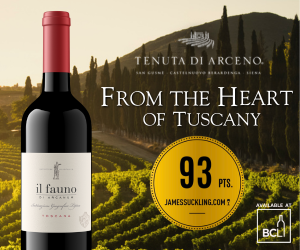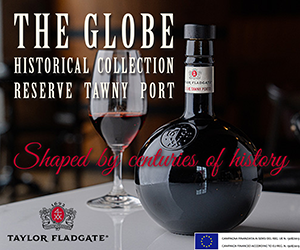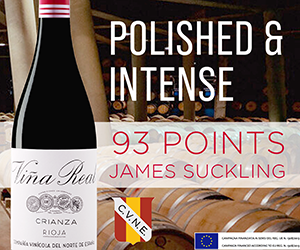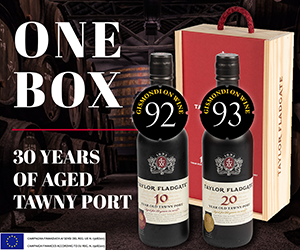B.C.Liquor Policy Review will be top of mind at the Vancouver International WineFestival and it will be interesting to see how government presents its positionto the 178 wineries in attendance, especially the 150 foreign producers hopingfor some progress as it pertains to their ability to do business in B.C..
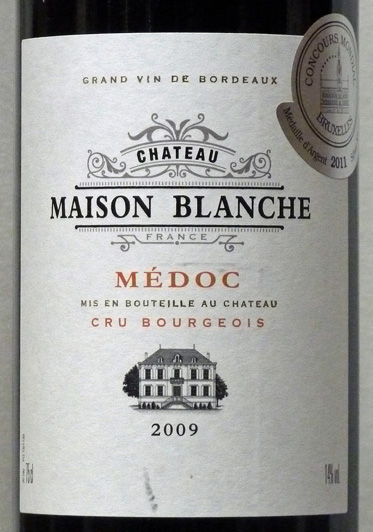
B.C.Liquor Policy Review will be top of mind at the Vancouver International WineFestival and it will be interesting to see how government presents its positionto the 178 wineries in attendance, especially the 150 foreign producers hopingfor some progress as it pertains to their ability to do business in B.C.. With no changes to the oppressive tax system and no hope of direct access forforeign wines to the market, it should be a short conversation.
We talk often about what consumers can garner from the festival, and we will in aspecial Wine Festival Salut edition next week, but this week I wanted to lookat the festival through the eyes of the wineries attending. Finding yourself in a room full of competitors presents a fabulous opportunity to gatherer intelligence about the local market and those very competitors trying to takeyour market share.
There are still some screwcap holdouts -- Earth to the United States and France -- butI suspect a quick tour of the room will reveal if your wine is under $20 inB.C. or $10-$12 in most other countries, it should be under screwcap. This is doubly true for fresh white wines you want to sell in B.C. restaurants by theglass. There are some remarkable designs to be had and you will see most ofthem at the tables so if you are on the fence, look around. If you need anyfurther motivation, women buy most of the wine in Canadian households and theydo not enjoy struggling with wine corks.
Scopingout bottle design and labels is another festival pastime for marketing types. For purity of design and art, head to the Spanish zone. Spain is not onlymaking some electric wine but its mix of packaging at all price points is amongthe best in the world.
The festival also likely has the largest collection of big brands in the world so you can check out the latest in how to package bland wine.
One of the most important things you can do is seek out wines you know to be directcompetitors in the market. Be sure to note the retail price. Then ask if you want a listing in B.C. or whether what you really want to do is sell wine here. Your FOB export price may look good when you are sitting in Bordeaux, Adelaide,Cape Town or Mendoza but once it is run through the B.C. tax machine the shelf price could be $5-10 more than you thought. Add to that a restaurant markup based on your retail price and your tasty little $15 cabernet could be sellingor mostly sitting on a restaurant wine list for $60.
The words organic and bio-dynamic will be on some labels and not on others, but the same techniques are employed. Who will win this battle, the certifiers or theearnest "we practice organic methods but we don't put it on the label" group? How green is your wine and what messages connect with consumers: fair-trade,sustainable, fish-friendly, eco-friendly, best farming practices and so itgoes. Are organic wines even recognized at retail? Some of these questions can be directed at the consumers who walk up to your booth.
Perhaps of top interest to foreigners is what we are drinking in B.C.? According to the figures, half the wines we drink are Canadian, although you can cut that figureto about a quarter when we talk about grapes grown and wine made in B.C.; therest is mostly imported wine, run through a Canadian winery pipe, which comes out under the dubious cellared in Canada moniker. It is unfortunately a formidable competitor at its price point that is almost impossible to competeagainst, unless you stop selling your bulk wine to the large Canadian wineries.
In the authentic wine arena, the B.C. import story differs from the rest of Canada. At the moment the United States (mostly California) leads all countries with 23.7per cent of the import market and it is growing. Australia is next at 18.3 percent but declining at an alarming clip. At 12.3 per cent, Italy is stable,Chile at 11.3 per cent is growing ever so slightly. Argentina is falling at 9.9per cent (too much cheap malbec?) while the theme country France sits in arelatively stable sixth position at 8.2 per cent. Rounding out the chart are Spain/Portugal (don't know why we combine these sales), South Africa and Germany at 5.2, 3.2 and 1.6 per cent respectively.
All this information and more can be discovered at the International Tasting Room; Saturday night is already sold out.
Casa Silva Doña Dominga Sauvignon Blanc Semillon Single Vineyard La Hijuela 2011, Valle del Colchagua, Chile
Price $15 (Everything Wine)
UPC 0688438000320
Score 87/100
Remarks Not sure how a vineyard inplanted in 1912 can be involved in a $15 wine but these all-original, pre-phylloxera plants, by way of Bordeaux, more than over deliver. The blend is not only balanced but bright with melon, mango and guava flavours with flecks of grass. The blend is 50/50 sauvignon sémillon from the La Hijuela Vineyard in Colchagua. Back up the truck.
Di Lenardo Pinot Grigio Unoaked2010, Friuli-Venezia Giulia, Italy
Price $19
UPC 08007711000055
Score 88/100
Remarks Not your average Italian grigio, this has an attractive, floral, butter, honeyed nose with a wisp of minerality.The palate mixes cool, pear notes with quince and nutty lees flavours. It finishes dry, fresh and food-friendly. Now under screwcap.
Wine Miopasso Primitivo 2011,Puglia, Italy
Price $19
UPC008034115191294
Score86/100
Remarks Earthy, meaty, peppery, prune nose with black plum and savoury aromas. The style is fresh and juicy with plum, prune, black liquorice, tobacco and earthy flavours with just a bit of southern Italian sweetness on the finish. Solid easy-sipping red for the barbecue.
Sebastiani Cabernet Sauvignon 2010,Sonoma County, California, United States
Price $23
UPC 088232002610
Score 88/100
Remarks The base vines date back to 1961 although today the mix includes fruit from Sonoma Valley, Chalk Hill and the Alexander Valley. The 2010 mix is 82 cabernet sauvignon with 9 percent merlot and small amounts of petit verdot and other mixed reds. Love the bright, rich aromatic fruit notes of black cherry, tea and cassis. Some 15 months in American oak adds toasted, dried herbs spice and vanilla notes to a deliciousdrinking round soft, juicy cabernet you can drink now.
Maison Blanche Medoc 2009, Bordeaux,France
Price $27
UPC 3295890158505
Score 90/100
Remarks This is one of the best value cru Bourgeois we have seen in years in B.C. The 80/20 merlot/ cabernet sauvignon mix is put together by highly regarded winemaker Stéphane Derenoncourt who works with 90 some wineries around the world. The fruit is ripe but with ajuicy red fruit tinge underneath. The palate is dense and weighty with smoky, spicy, dark fruit flavours with a black liquorice finish. Impress weight and structure if a touch alcoholic. Good value and a wonderful bottle for BC wineries to contemplate regarding price and quality.
Colomé Malbec Estate 2011, CalchaquiValley, Salta, North, Argentina
Price $30
UPC 7798104764029
Score 91/100
Remarks The blend is 85 malbec and 15 percent tannat, cabernet sauvignon and petite verdot all grown in the upper Calchaqui Valley between 2300 and 3111 metres above sea level. It's all aged in French oak but only 20 per cent is new. Blackberries and blackcurrants mix with cherries and raspberries flecked by floral (violet) and mineral/iron notes. The attack is soft and round with fresh acidity and tasty black cherry, black olive, plum, liquorice and chocolate notes. Love the long warm savoury beef friendly finish. Delicious.

 quicksearch
quicksearch


